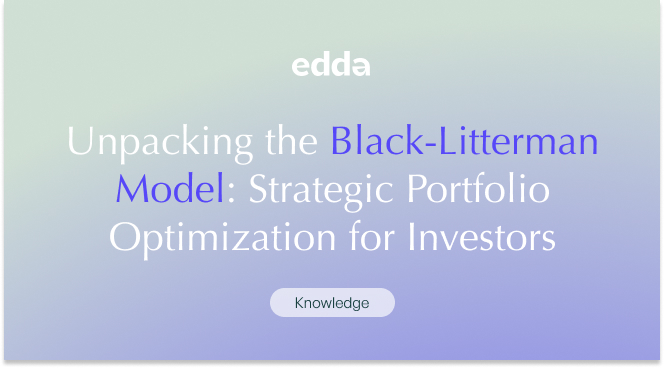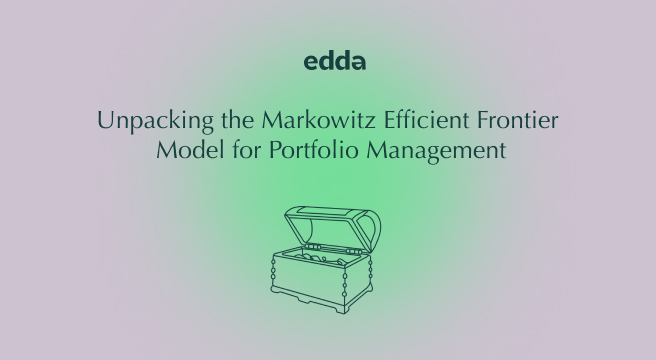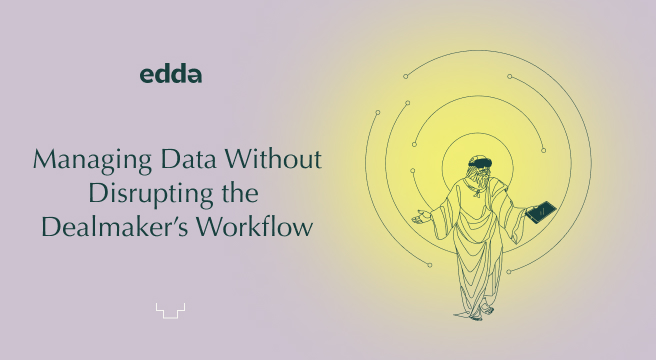Kleiner Perkins’ foray into the clean energy sector represents a significant redirection in their investment approach, revealing unique challenges and key lessons for the venture capital community.
This article explores their journey into sustainable technology investments, shedding light on the critical realizations and hurdles they encountered. It serves as a case study for venture capitalists, offering valuable perspectives on assessing markets, responding to competition, and diversifying investment portfolios.
We’ll also examine the role of sophisticated venture capital deal flow software like Edda in the VC stack, highlighting how they can assist investors in circumventing similar pitfalls and making well-informed decisions.
Kleiner Perkins and the Clean Energy Transition
Kleiner Perkins’ venture into the clean energy sector marked a significant transformation in their investment focus, reflecting a deep understanding of the evolving relevance of sustainable technology. Renowned for their impactful tech industry investments, the firm charted new territory, turning its attention to renewable energy and eco-friendly technologies. This strategic move was rooted in an awareness of the changing global energy landscape and a commitment to drive innovation in the face of climate change challenges.
Central to their strategy in this new domain was the support for trailblazing companies at the forefront of renewable energy and efficiency solutions. The firm’s investment approach was meticulously crafted to align financial success with environmental progress, mirroring a wider shift in the investment world towards embracing sustainability. Their diverse portfolio, featuring companies committed to revolutionizing energy consumption and minimizing environmental footprints, stood as a testament to their conviction in the sector’s promise.
The firm’s engagement in clean energy gained recognition for its role in bringing environmental considerations to the forefront of venture capital. This strategic realignment was more than a pursuit of emerging market opportunities; it represented an active contribution to a global movement towards sustainable energy practices. Kleiner Perkins’ involvement in the clean energy space demonstrated their agility and foresight, positioning them as a vanguard in shaping the future trajectory of the energy industry.
The Challenges in Kleiner Perkins’ Clean Energy Investment
Kleiner Perkins’ venture into the clean energy sector, while groundbreaking, led to a series of realizations and consequences that reshaped the firm’s approach to investing in emerging markets. The transition from their stronghold in tech investments to the uncharted waters of clean energy revealed several critical insights, particularly when their expectations clashed with market realities.
Realization of Market Overestimation
The firm encountered the tangible impact of their miscalculation regarding the market’s readiness for clean energy technologies. Unlike the rapid adoption rates seen in the tech sector, clean energy technologies faced longer developmental timelines and integration challenges, leading to slower returns on investment. This disparity became evident as the expected quick returns did not materialize, prompting a reassessment of their market analysis strategies.
Confronting Intense Competition & Market Evolution
The competitive dynamics of the clean energy sector, vastly different from the tech industry, posed significant challenges to Kleiner Perkins’ portfolio companies. They found themselves outpaced by competitors with deeper industry experience and broader resources. This realization underscored the necessity for a more nuanced understanding of sector-specific competition and market trends.
Strategic Shift in Investment Approach
The unique risks associated with regulatory changes and technological shifts in the clean energy sector prompted Kleiner Perkins to reevaluate their investment strategy. The need for a diversified approach, balancing between early-stage innovation and established entities, became apparent as a method to mitigate these sector-specific risks.
Response to Regulatory and Economic Shifts
The firm’s vulnerability to external factors like government policies and economic incentives became strikingly clear during the late 2000s economic downturn. The downturn’s impact on funding and public support for clean energy initiatives directly affected the growth potential of their investments, highlighting the importance of being adaptable to external economic conditions.
These challenges significantly influenced Kleiner Perkins’ investment philosophy, fostering a more measured approach in future endeavors. The firm recognized the necessity of tailoring investment strategies to align with the unique attributes of each sector, such as market adoption rates, competition, regulatory frameworks, and economic factors.
This period in their history was instrumental in emphasizing the value of agility, comprehensive market research, and the ability to adjust strategies in response to the fluctuating nature of venture capital markets.
Lessons from Kleiner Perkins’ Clean Energy Endeavor
The journey of Kleiner Perkins into the clean energy sector offers essential lessons for those in venture capital, especially when venturing into new and evolving markets like sustainable technology.
1. Assess Market Viability and Technological Readiness
Key Takeaway: Conduct comprehensive evaluations of market conditions and technological maturity.
Kleiner Perkins’ experience in the clean energy sector underscores the need for investors to thoroughly assess both the market’s readiness for new technologies and the technologies’ maturity for market integration.
This dual analysis requires understanding current market conditions and also evaluating the developmental stage of the technologies and their alignment with market demands. Investors should consider if the market is prepared to adopt these technologies and if the technologies themselves are ready for widespread deployment.
2. Strategic Response to Competitive Dynamics
Key Takeaway: Develop an agile investment strategy responsive to competitive landscapes.
Kleiner Perkins’ encounter with intense competition in the clean energy sector highlights the importance of understanding and responding to the competitive dynamics unique to each market. Investors should analyze the competitive landscape, recognizing potential challenges from both established players and emerging competitors. This understanding is crucial in shaping a strategy that is both agile and responsive to the market’s evolving nature.
3. Diversify Investment Portfolio
Key Takeaway: Diversify investments to mitigate sector-specific risks.
The firm’s approach to clean energy investment showed the importance of diversifying the investment portfolio to mitigate risks, such as those associated with regulatory changes and technological shifts. Investors should balance their portfolio across a spectrum of companies, from early-stage innovators to more established entities, to spread risk and increase the likelihood of successful outcomes.
4. Navigating Regulatory and Economic Influences
Key Takeaway: Remain adaptable to regulatory changes and economic shifts.
The clean energy sector’s dependency on government policies and economic incentives demonstrates the need for investors to be adaptable to external regulatory and economic factors. This adaptability involves staying informed about policy changes, economic incentives, and other external influences that can significantly impact investment outcomes.
Elevating Portfolio Management with Edda
Edda’s dealflow software is a vital tool for venture capital firms. This suite offers a comprehensive approach to investment and financial portfolio management, crucial for addressing the kind of challenges Kleiner Perkins faced.
- Dealflow & Pipeline Management: This feature provides complete oversight of the investment pipeline, critical for managing ventures effectively. It allows for detailed tracking from inception to completion, ensuring investments are based on a solid understanding of market dynamics and business feasibility.
- Portfolio Management: Tailored for detailed monitoring and analysis of investment portfolios, this tool is especially useful in situations where financial sustainability and business model viability are questioned.
- Financial Analysis and Due Diligence: Accelerating the due diligence process, Edda offers powerful tools for financial analysis. These are crucial for a thorough examination of financial stability and growth prospects.
- Market Education and Trend Analysis: The venture capital software keeps investors informed about market conditions and economic factors, essential for adapting investment strategies in markets that are constantly adapting and changing.
Edda’s venture capital portfolio management software is an indispensable asset for investment firms dealing with complex scenarios. It provides the necessary tools for a deep understanding, efficient management, and strategic planning in the investment sector, proving imperative in navigating the challenges of modern investment environments.





